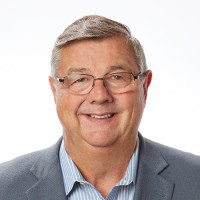
Turning Goals from Wishes to Outcomes
Brought to you by Performance Trust

Community banks should measure their goals and objectives against four tests in order to craft sustainable approaches and outcomes.
Community banks set goals: growth targets for loans or deposits, an earnings target for the security portfolio, an return on equity target for the year. But aggressive loan growth may not be a prudent idea if loan-to-asset levels are already high entering a credit downturn. Earnings targets can be dangerous if they are pursued at any cost, regardless of risk. However, in the right context, each of these can lead to good outcomes.
The first test of any useful goal is answering whether it’s a good idea.
One personal example is that about a year ago I set a new goal to lose 100 pounds. I consulted with my doctor and we agreed that it was a good idea. So then we moved to the second test of a useful goal: Is it sustainable?
As “Atomic Habits: An Easy & Proven Way to Build Good Habits & Break Bad Ones” author James Clear puts it: “You do not rise to the level of your goals, you fall to the level of your process and systems.”
What good would my weight loss goal be if it wasn’t sustainable? If the approach I took did not change my habits and instead put me through a shock program, there would be little reason to doubt that the approaches and habits that led me to create this goal would bring me back there again. The only way to pursue my goal in a sustainable fashion would changing my habits – my personal processes and systems.
Banks often pursue goals in unstainable ways as well.
Consider a bank that set a goal in June 2018 of earning $3 million annually from its $100 million securities portfolio with no more than 5 years’ duration (sometimes called a “yield bogey”). Given a choice between a 5-year bullet agency at 2.86% and a 5-year, non-call 2-year agency at 3.10%, only the latter meets or beats the goal. A 3.10% yield earns $310,000 for this portfolio.
In June 2020, the callable bond got called and was replaced by a similar length bond yielding only 40 basis points, or $40,000, for the remaining three years. The sustainable plan would have earned us $286,000 for the past two years – but also $286,000 for the next three. To make earnings sustainable, banks always need to consider multiple scenarios, a longer timeframe and potentially relaxing their rigid “bogey” that may cost them future performance.
The third test of a useful goal is specifying action.
The late New York Governor Mario Cuomo once said, “There are only two rules for being successful: One, figure out what exactly you want to do, and two, do it.”
In my case, I didn’t do anything unsustainable. In fact, I did not do anything at all to work toward my long-term goal. When I checked my weight six months later, it should not have surprised me to see I had lost zero pounds. A goal that you do not change your habits for is not an authentic goal; it is at best a wish.
My wish had gotten exactly what you would expect: nothing. Upon realizing this, I took two material steps. It was not a matter of degree, but of specific, detailed plans. I changed my diet, joined a gym and spent $100 to fix my bicycle.
The fourth test of a useful goal is if it is based on positive changes to habits.
Banks must often do something similar to transform their objectives from wishes to authentic goals. Habits – or as we call them organizationally, processes and systems – must be elevated. A process of setting an earnings or yield bogey for the bond portfolio relied on the hope that other considerations, such as call protection and rate changes, wouldn’t come into play.
An elevated process would plan for earnings needs in multiple scenarios over a reasonable time period. Like repairing my bike, it may have required “spending” a little bit in current yield to actually reach a worthy outcome, no matter which scenario actually played out.
If your management team does not intentionally pursue positive changes to processes and systems (habits), its goals may plod along as mere wishes. As for me, six months after making changes to my habits, I have lost 50 pounds with 50 more to go. Everything changed the day I finally took the action to turn a wish into a useful goal.


